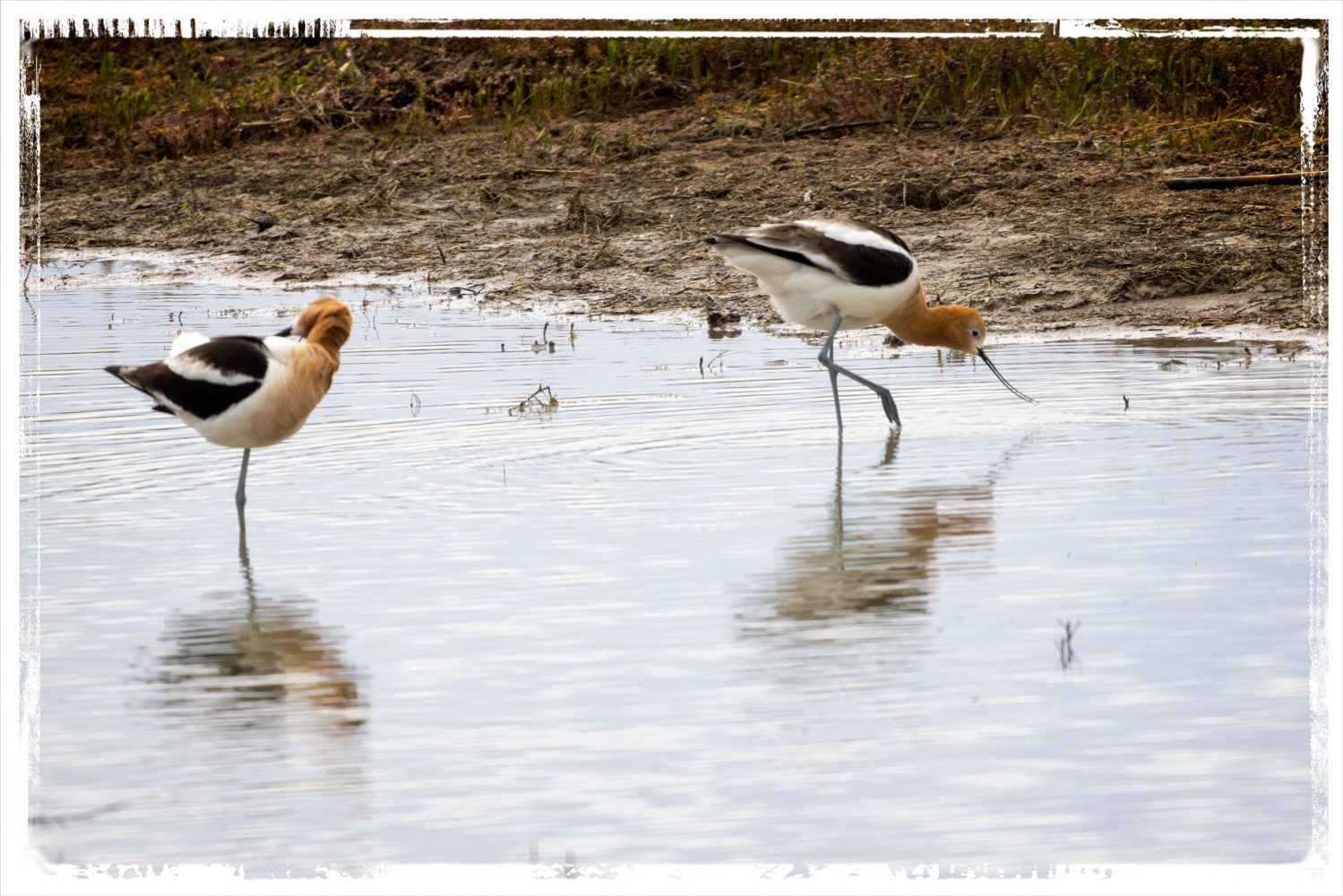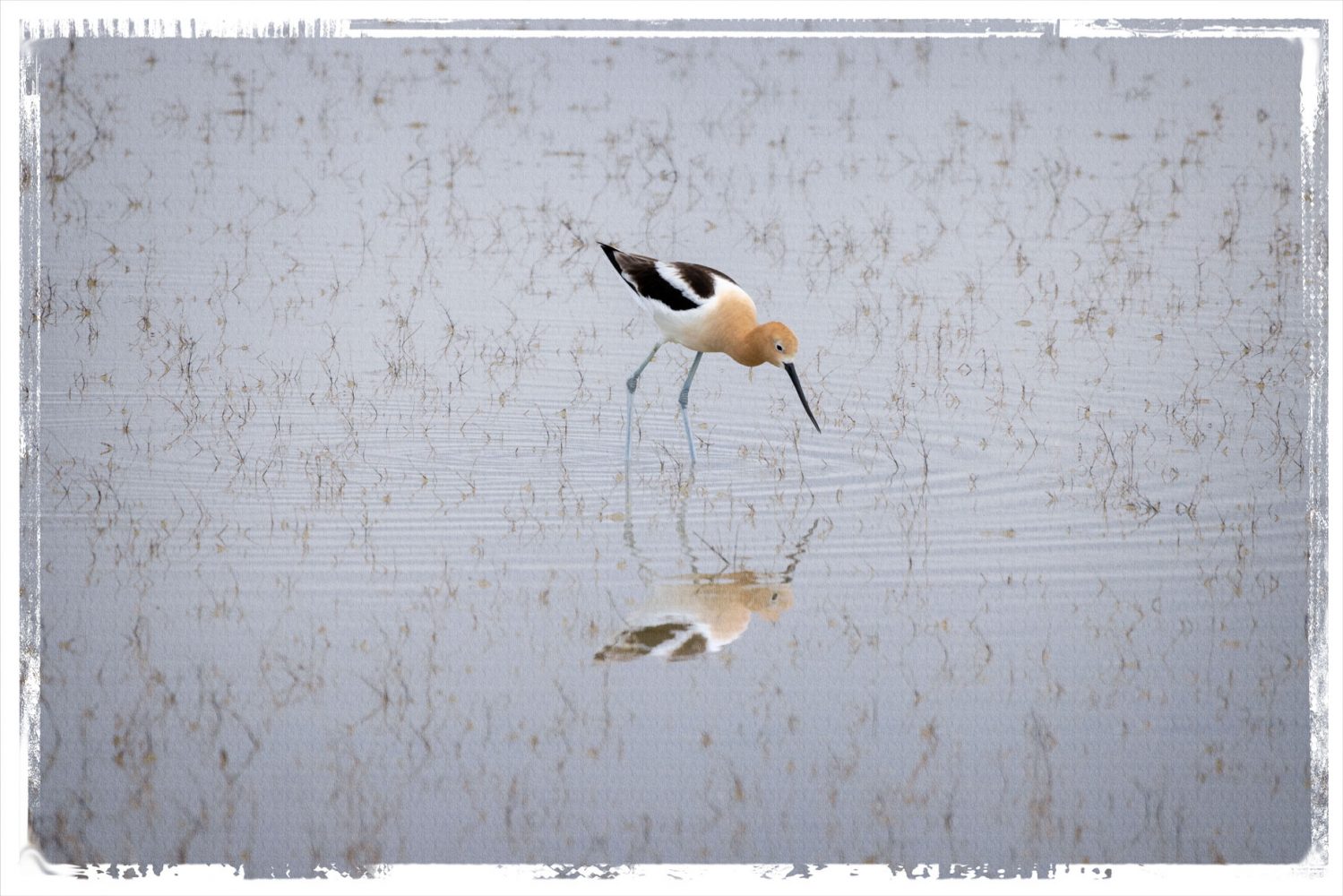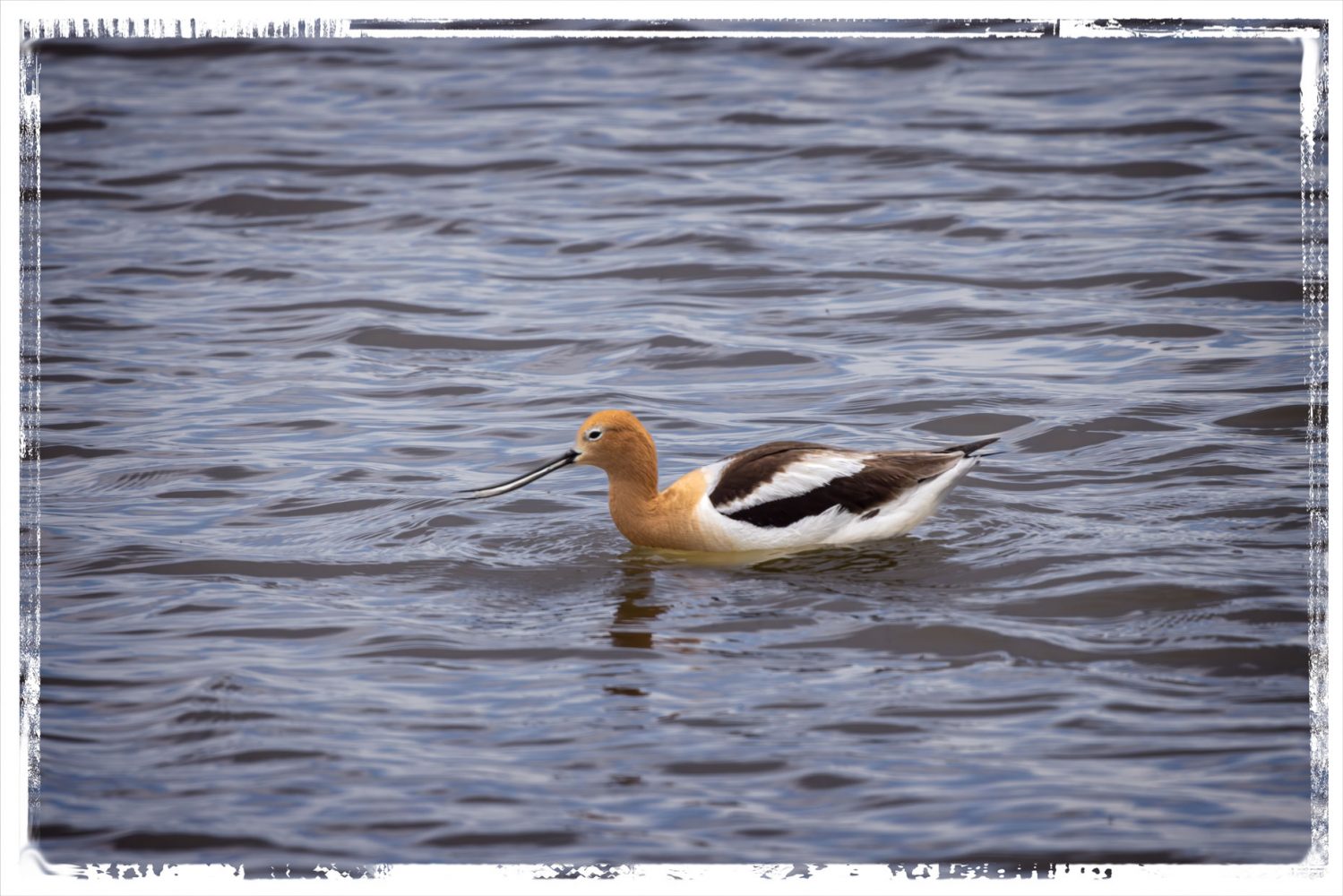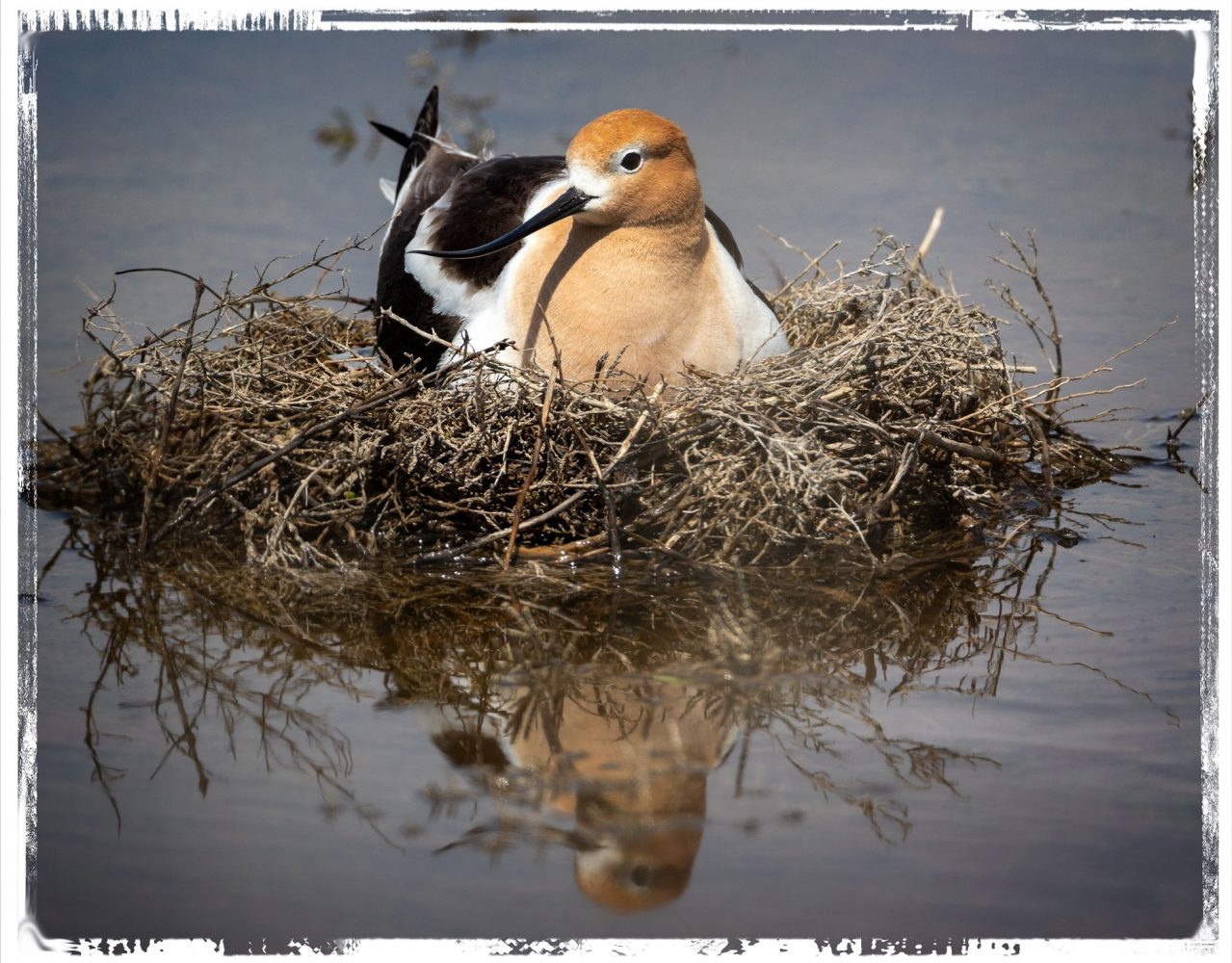We had made plans to visit the Colorado Websters in May to see Zoe’s graduation ceremony, and I didn’t plan on driving that far without visiting other places, too. Unfortunately, we couldn’t plan to do anything much because I had a doctor’s appointment right after graduation that had already been rescheduled once four months earlier. So, we planned an extra day of travel time to Colorado in order to spend a day visiting Bear River Migratory Bird Refuge where I hoped to see the American Avocets that I didn’t see on our recent trip through California.
It didn’t take long before we saw them, either, as we found a pair on the road to the auto tour.

For a while it looked like they might be the only ones we would see because the roads were flooding. We came up to a sign warning not to cross when there was water over the road, and there was definitely water over the road. I thought our RAV 4 was high enough that we could safely cross, but, with recent images from the news showing cars swept away by floodwaters, I decided it wasn’t worth the chance of being stuck and missing Zoe’s graduation.
Luckily, on our way back we stopped and talked to some other birders who had stopped at the refuge office. They were told they shouldn’t have any trouble crossing with their Subaru. Since our RAV 4 had at least as much ground clearance as their Subaru, I decided to chance it and made it fairly easily.
I’m glad we went on because we saw American Avocets throughout the refuge.

We also saw American Avocets that seemed to be floating and foraging, something I’d only seen a few times before.

I wondered if those Avocets were feeding in deep water by choice or were forced to feed there because there weren’t many areas that weren’t flooded.
Even more worrisome were the Avocet nests that seemed in immediate danger of being flooded.

We have observed Avocets nests both on dry fields and on tussocks in wetlands in prior years, but we’ve never seen one where the water surrounding the nest was this deep. Was the water that deep when the Avocets build the nest, or had the water risen afterward and they just refused to abandon the nest?
